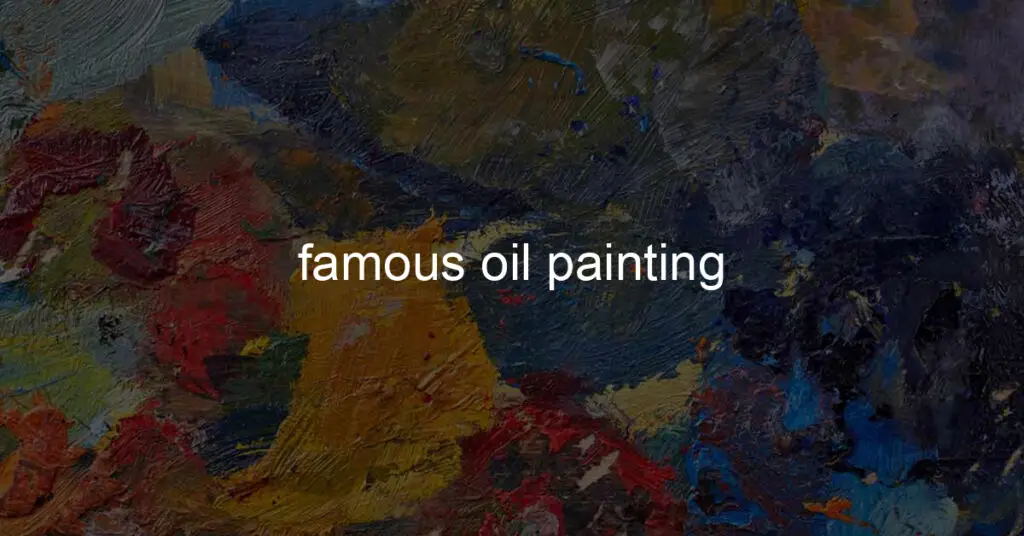Introduction to Famous Oil Paintings
Oil painting, an artistic medium that has been around for centuries, is characterized by the use of oil-based pigments applied on canvas, board, or panel. This technique offers artists a vast range of color possibilities, malleability, and depth, allowing them to create incredibly detailed and layered works.
Famous oil paintings often capture the spirit of their era, representing significant historical, cultural, or personal events and sentiments. These celebrated works are appreciated not just for their aesthetic appeal, but also for the mastery of technique and originality of vision demonstrated by their creators. From the Renaissance masters to contemporary artists, oil painting continues to be a dynamic and influential form of artistic expression.
Early Period of Oil Painting: The Masterpieces
Oil painting began its journey in the Western world during the Middle Ages. During this time, it was often used for religious iconography and to adorn the interiors of churches and cathedrals. Jan van Eyck, a Flemish painter of the 15th century, is often credited with popularizing oil paint as a medium.
His piece “The Arnolfini Portrait” is a quintessential example of early oil painting, demonstrating the medium’s ability to render intricate detail and create a realistic sense of depth and volume. These characteristics opened new vistas for artistic exploration, paving the way for the Renaissance.
Renaissance Era: Birth of Iconic Oil Paintings
The Renaissance, a period of ‘rebirth’ in art, culture, and intellect in Europe, witnessed some of the most celebrated oil paintings ever created. Artists like Leonardo da Vinci, Michelangelo, and Raphael revolutionized the medium with their mastery of perspective, light and shadow, and anatomical accuracy.
Leonardo’s “Mona Lisa,” arguably the most famous oil painting in the world, showcases subtle, almost magical transitions of tone and color – a technique known as sfumato. Similarly, Raphael’s “School of Athens” stands as a testament to the precise perspective and harmony characteristic of High Renaissance art.
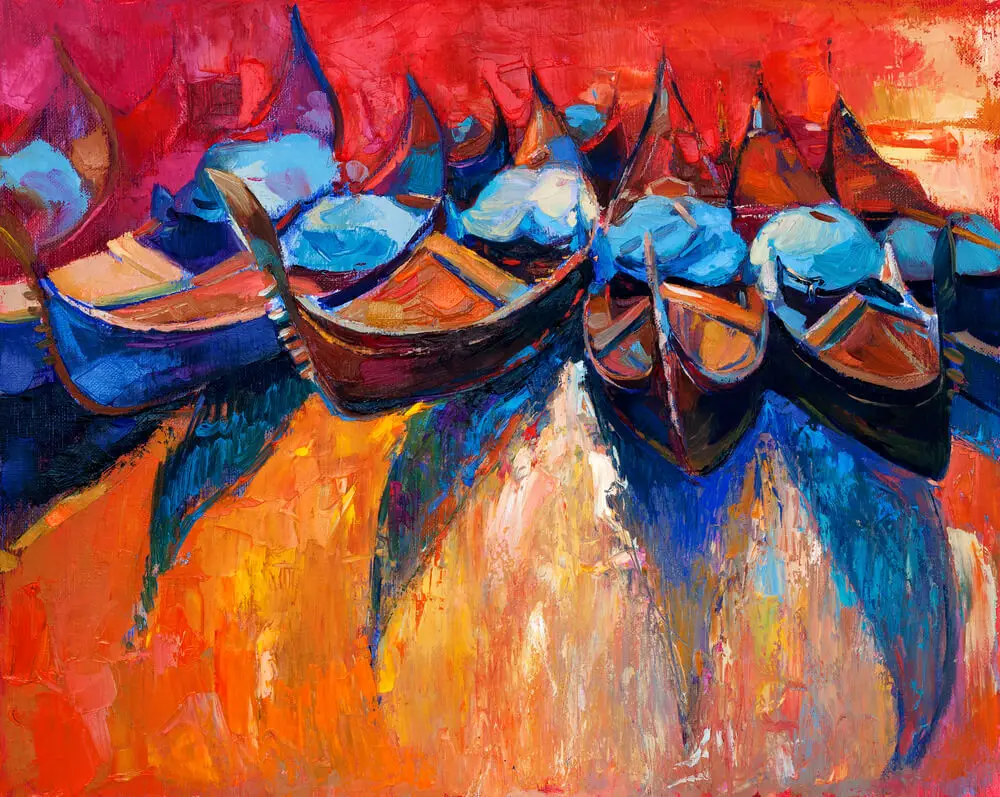
Baroque Period: Oil Paintings of Drama and Movement
The Baroque period followed the Renaissance, ushering in a style of art that was grand, dramatic, and filled with movement. Artists began to exploit the malleability of oil paints to portray dramatic light effects and movement in their works.
Caravaggio, with his painting “The Calling of St. Matthew,” demonstrated the technique of chiaroscuro, using contrasts of light and dark to create dramatic scenes. Another iconic oil painting from this era is Rembrandt’s “The Night Watch,” renowned for its monumental size, dynamic composition, and masterful use of light and shadow.
Romantic Period: Oil Paintings of Emotion and Nature
The Romantic period in art was marked by a shift in focus from the rigid forms and classical themes of the past to the exploration of emotion, individuality, and the beauty of nature. Oil paintings from this era like “Wanderer above the Sea of Fog” by Caspar David Friedrich, or J.M.W Turner’s dramatic seascapes, demonstrate a profound sense of emotional depth and appreciation for the sublime in nature. These paintings are characterized by vibrant, intense colors and free, expressive brushwork, highlighting the artists’ emotional response to the subject.
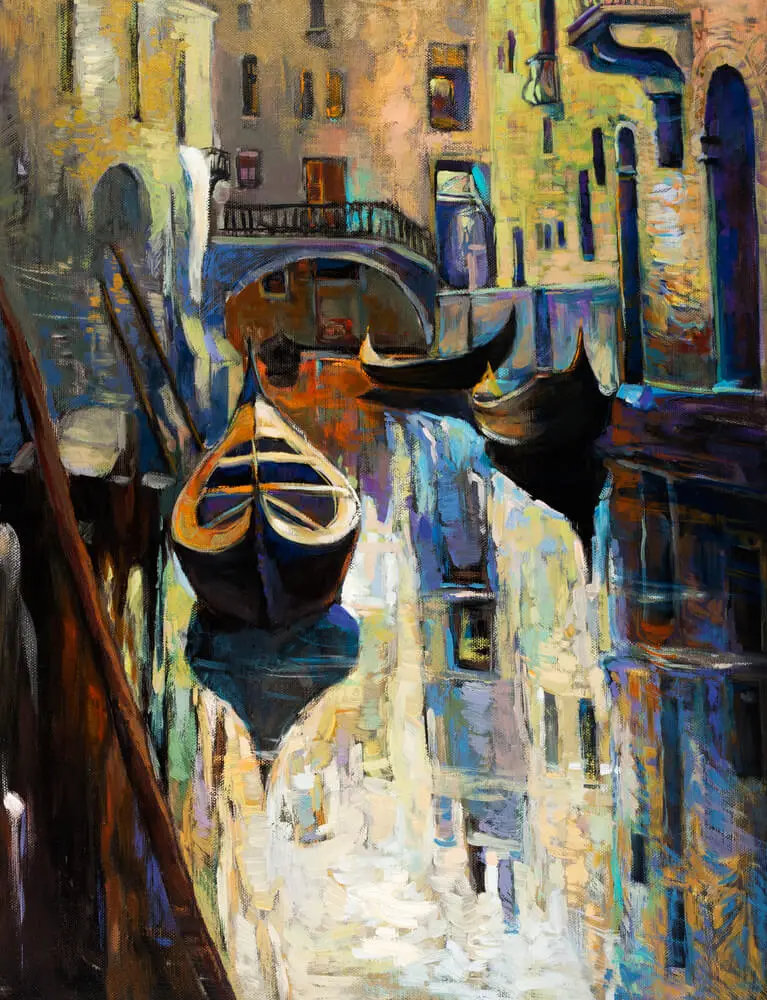
Impressionist Era: The Transformation of Oil Painting
The Impressionist era marked a radical shift in the art world. Artists began to move away from the meticulous detail and realism of earlier periods towards capturing the fleeting effects of light and color. Pierre-Auguste Renoir, Claude Monet, and Édouard Manet are just a few of the artists who revolutionized the way oil painting was perceived during this period. Paintings like Monet’s “Water Lilies” series or Reno
it’s “Luncheon of the Boating Party” reflect the characteristic Impressionist style, with loose brushwork, open composition, and emphasis on light in its changing qualities.
Post-Impressionist Oil Paintings: Van Gogh, Cézanne, and More
Post-Impressionism emerged as a reaction against the limitations of Impressionism, with artists striving to evoke emotion rather than simply capturing the effects of light and color. This era was dominated by artists like Vincent van Gogh, Paul Cézanne, and Paul Gauguin, each bringing their own unique approach to oil painting.
Van Gogh’s “Starry Night,” with its swirling brush strokes and expressive use of color, embodies the emotional intensity characteristic of his work. On the other hand, Cézanne’s “Mont Sainte-Victoire” series demonstrates his innovative approach to form and perspective, laying the groundwork for the subsequent development of modern art.
Modernist Movements: The New Face of Oil Paintings
The dawn of the 20th century brought with it a series of modernist movements that forever changed the landscape of oil painting. Cubism, spearheaded by Pablo Picasso and Georges Braque, deconstructed objects into geometric forms, while the Surrealists, like Salvador Dali in his iconic painting “The Persistence of Memory,” used oil paints to explore the world of dreams and the subconscious.
Expressionism, Abstract Expressionism, and numerous other movements also emerged during this period, each pushing the boundaries of what could be achieved with oil paints.
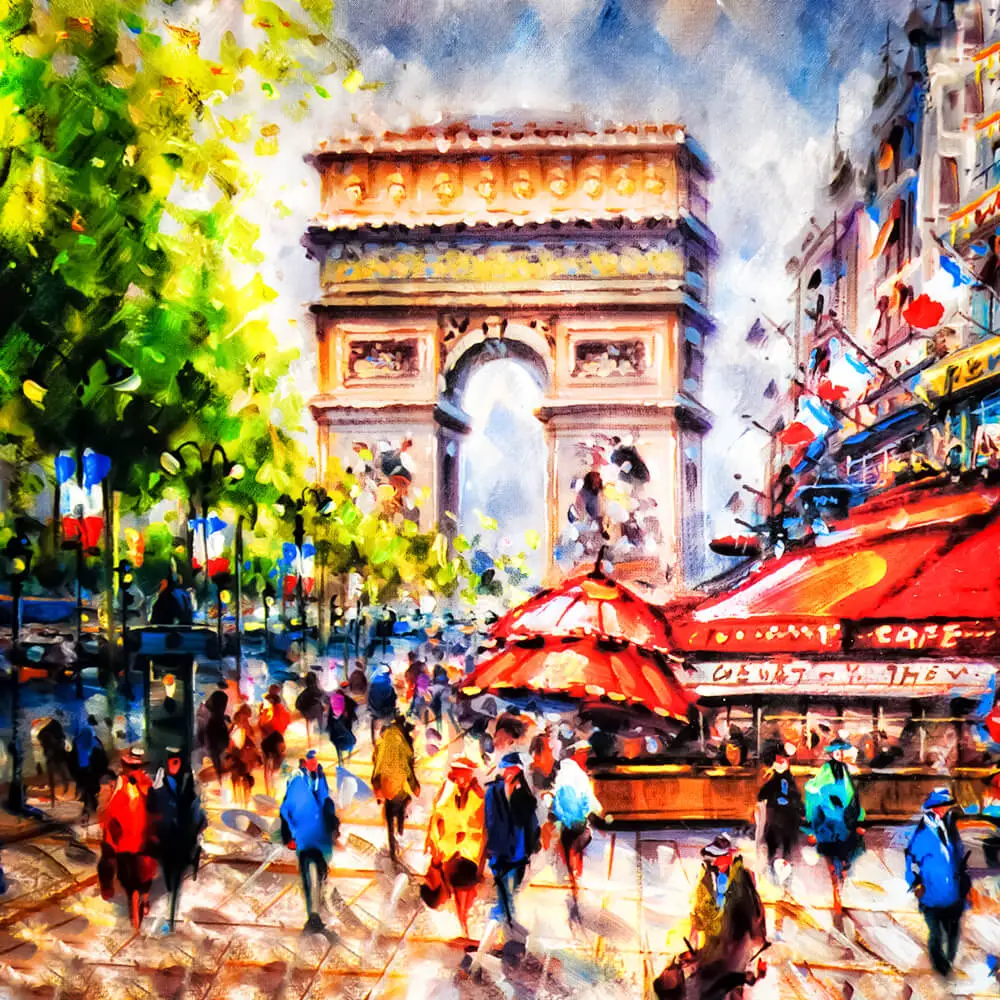
Famous Oil Paintings in the 20th Century
The 20th century witnessed a departure from traditional styles and techniques in favor of more experimental approaches. Artists such as Jackson Pollock, Mark Rothko, and Willem de Kooning, leaders of the Abstract Expressionist movement, used oil paint in new ways to create paintings that were not just visual experiences, but emotional and spiritual ones as well.
Pollock’s drip paintings, for example, saw him abandoning the brush entirely, instead pouring or splattering paint onto his canvas to create complex, abstract compositions. Meanwhile, Rothko’s “Color Field” paintings consist of large rectangles of color designed to create an overwhelming emotional impact.
Masterpieces from the Abstract Expressionism Era
Abstract Expressionism, a post-World War II art movement, was characterized by a rejection of traditional artistic form in favor of abstract, emotive works. Artists used their canvases to express personal emotions and inner realities, often employing innovative techniques such as action painting and color field painting.
Jackson Pollock’s “Autumn Rhythm” and “Number 1A” are famous examples of Abstract Expressionist oil paintings, characterized by their large scale, energetic application of paint, and lack of discernible subject matter. Similarly, Mark Rothko’s works, such as “No. 61 (Rust and Blue)” use large fields of color to create deeply affecting, contemplative spaces.
The Story Behind Mona Lisa: The Most Famous Oil Painting
Leonardo da Vinci’s “Mona Lisa” is likely the most recognized oil painting in the world, housed in the Louvre Museum in Paris. Painted in the early 16th century, this portrait is admired for its compositional innovation, detailed rendering, and enigmatic expression of its subject.
The sitter’s subtle smile, the soft transitions of light and shadow across her face, and the atmospheric landscape in the background are all achieved through Leonardo’s mastery of the sfumato technique. The painting’s fame has been bolstered by various theories about the identity of the sitter, the reason for her smile, and the painting’s mysterious history, including its theft in the early 20th century.
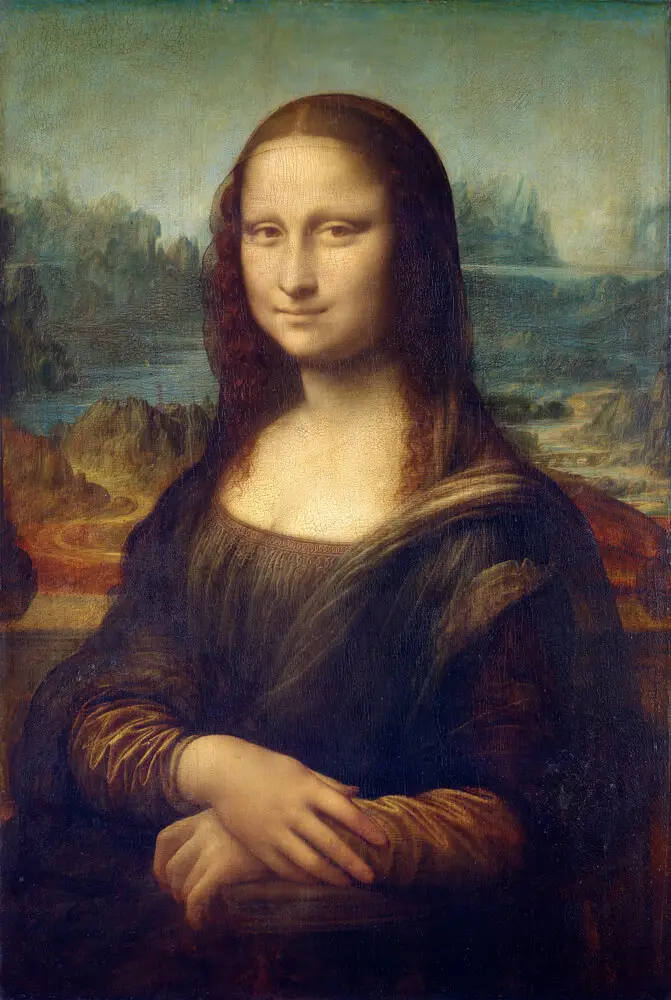
The Starry Night: Vincent van Gogh’s Contribution to Oil Painting
“The Starry Night” by Vincent van Gogh is an iconic example of Post-Impressionist oil painting and one of the most famous images in the history of Western art. Created during the artist’s stay at an asylum in Saint-Rémy-de-Provence in 1889, the painting is renowned for its expressive, swirling brushwork and emotionally charged use of color.
Van Gogh’s technique goes beyond the visible, employing color and form to convey the tumultuous inner landscape of his mind. Despite its creation during a period of intense personal turmoil for the artist, “The Starry Night” is a testament to van Gogh’s profound connection with nature and his exceptional ability to convey emotion through his art.
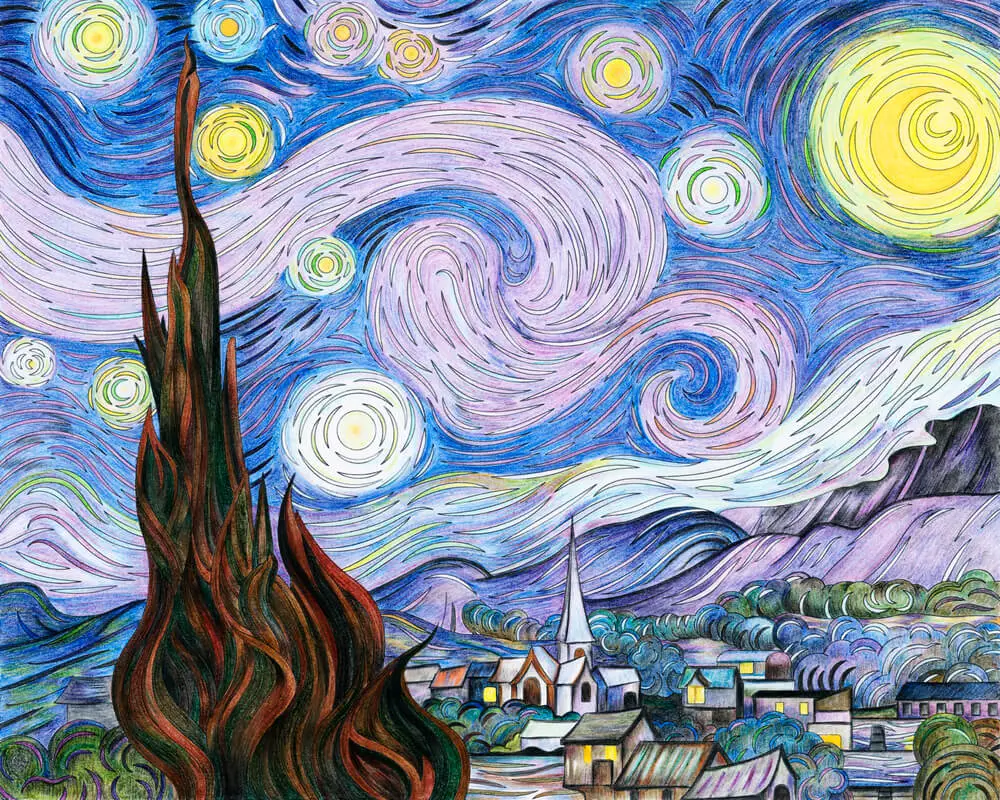
Iconic Oil Paintings and Their Significance in Art History
Each era in art history has produced iconic oil paintings that reflect the style, themes, and innovations of the time. From Leonardo da Vinci’s “Mona Lisa,” which exemplifies the techniques of the High Renaissance, to Grant Wood’s “American Gothic,” a symbol of Regionalism during the Great Depression, these artworks have shaped and been shaped by the societies in which they were created.
They tell stories of their time, communicate the artist’s personal emotions or world view, and often inspire new directions in the world of art. These works continue to be studied and admired for their artistic merit, cultural significance, and the influence they have had on subsequent generations of artists.
Preservation and Restoration of Famous Oil Paintings
The preservation and restoration of oil paintings is a delicate and complex process that is vital for maintaining these works for future generations. Over time, oil paintings can suffer from a variety of issues, including fading, discoloration, cracking, and damage from environmental factors like moisture and light.
Art conservators use a combination of art history, science, and meticulous handiwork to restore these works to their original glory. They clean the surface, repair any damage, and often apply a protective varnish. Restoration can also involve complex processes like infrared examination and pigment analysis to ensure as close a match as possible to the original materials and techniques.
Contemporary Oil Paintings: Carrying the Legacy Forward
In the contemporary art world, oil painting continues to be a popular medium, even as artists experiment with new forms and technologies. Contemporary painters like Jenny Saville, Peter Doig, and Gerhard Richter are known for their innovative and individualistic approaches to oil painting, pushing the medium’s boundaries while often referencing its rich history.
For instance, Saville’s large-scale, visceral portraits explore themes of the body and physicality, employing the texture and malleability of oil paint to create a sense of palpable reality. Meanwhile, Richter’s squeegee paintings demonstrate a blend of meticulous photorealism and expressive abstraction, creating a dialogue with the past while firmly rooted in the present.
Through such works, contemporary oil painting carries forward the legacy of this time-honored medium, demonstrating its enduring relevance and versatility.
Conclusion: The Timeless Artistry of Oil Painting
Over the centuries, oil painting has been a constant medium of artistic expression, evolving with each period and reflecting the unique sensibilities of the time. From the meticulous detail and realism of the early masters, through the emotive swirls of the Impressionists and Post-Impressionists, to the groundbreaking abstractions of the modern and contemporary periods, oil painting has displayed an astounding capacity for reinvention.
It has proven itself as a medium capable of capturing the deepest depths of human emotion, the grandest visions of nature, and the most profound reflections on society and the human condition.
While each iconic oil painting represents a unique artistic vision, they all share a common language of texture, color, and form. The preservation and restoration of these treasures ensure that future generations can continue to appreciate their beauty and significance. As we observe the ingenuity of contemporary artists working in this medium, it is evident that oil painting, with its rich history and versatile potential, continues to thrive, proving its enduring appeal in the ever-evolving art world.

